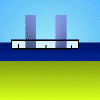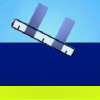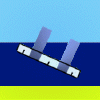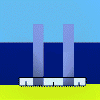|
The sea forts were designed by Mr. Guy Maunsell, a notable architect, who sent numerous design proposals to the Admiralty during the run up to the start of hostilities at the start of the second world war. In October 1940 Maunsell was instructed to design a sea fortress which could be towed into the Thames Estuary and sunk to defend the Southern coast of Britain from any enemy attack via air or sea. His design used a pontoon base in a single unit 180 foot long by 80 foot wide. This had a weight of 2623 tons. On top of this was located another unit which housed the guns, men and ammunition. This design was estimated to cost around £3,250,000 at 1994 prices for three such units. However the construction of these forts never actually took place. Shortly after this the threat of a German invasion increased as France fell to the Nazi onslaught. As well as this, Allied shipping in the Channel was becoming targeted more frequently by the enemy, and German bombers were finding little resistance to their progress as they travelled above the Thames on their way to bomb the London Docks. The admiralty thus asked Maunsell to design blueprints for five new fortresses. These were largely based on his previous work, but was capable of housing 100 men inside the legs of the structure, as well as having a large gun emplacement built on the top. These fortresses were self sufficient for over a month. A Thames Estuary Naval Fort. Work was started shortly after July 1941. The pontoons allowed the structures to be built in dry-docks, then floated into position before being "sunk". Although calculations had shown these designs were adequate it was a tense moment when the first pontoon was set adrift. This however, was nothing compared to the tension faced when the sea cocks were opened and water was allowed to enter the pontoon. The structures were top heavy, and many feared that they would simply tip over and "turn turtle" during final placement. Fortunately, this was not the case. Fifteen minutes after the opening of the sea cocks the pontoon submerged. Twenty seconds later the leading edge of the pontoon hit the sea bed. Attached to this edge was a large reinforced concrete "buffer" which was designed to crush when it hit the seabed, and thus dissipate some of the force which could have damaged the pontoon itself. Ninety seconds later the pontoon became completely filled with sea water, and the whole structure became fixed firmly to the seabed. Please note the top of each naval fort has been removed to aid clarity. The forts were systematically floated to their locations. The sea cocks are opened and the pontoon begins to fill. Twenty seconds later the pontoon reaches the sea bed. The fort comes to its final position on the seabed.
A
rare photograph of the moment the sea cocks |






